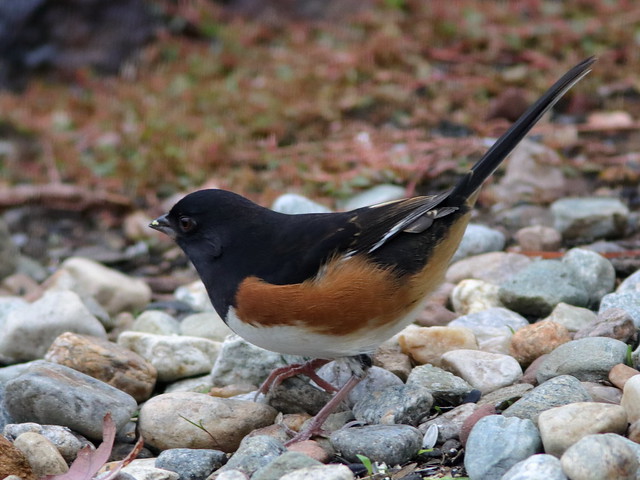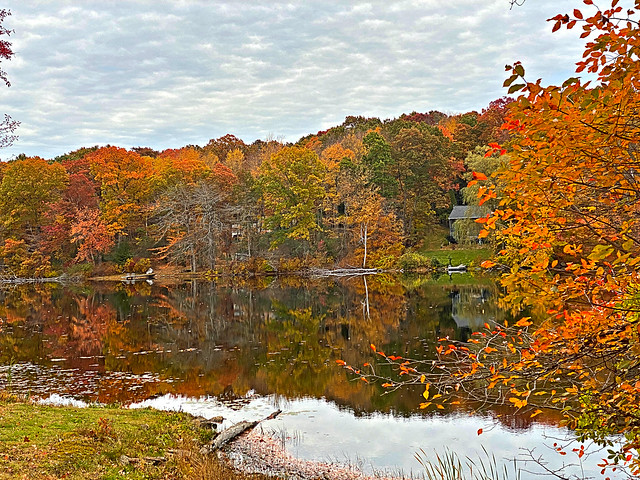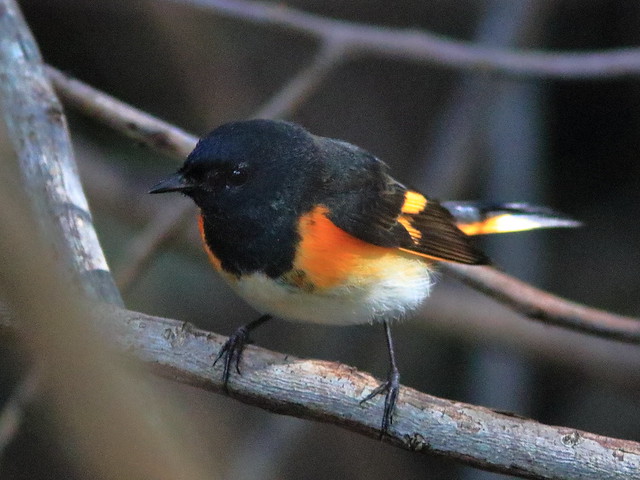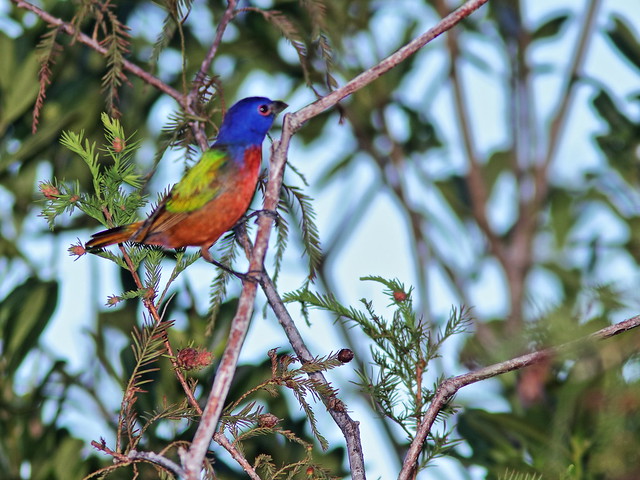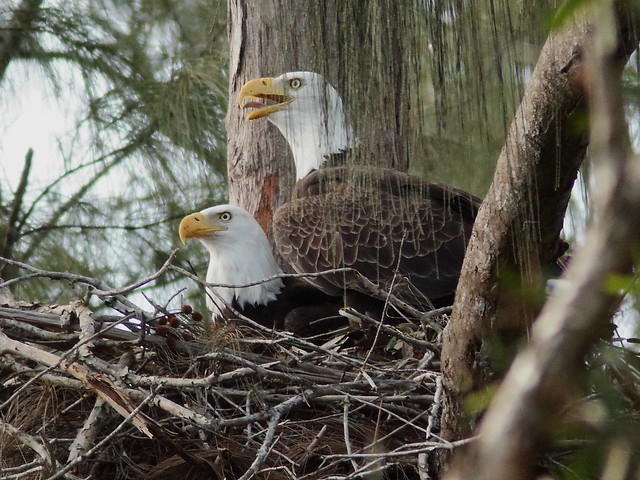By now it may be obvious to readers that, lately, my observations and photos have been limited to a very restricted geographic area. Namely, the grounds surrounding our home ("La Casita") and within walking distance, usually a mile-long loop along the eastern shore of the lake.
I assure you I am not a criminal under house arrest. Rather, my reduced mobility is related to conditions that impair my strength and endurance. There are many scenic and well-marked wilderness trails nearby, but even with the help of a stout hiking stick, I have difficulty climbing over boulders and crossing streams on stepping stones. Our local morning walk follows paved surfaces and provides an opportunity for much-needed exercise.
Feeder watching gets more interesting as winter visitors and wanderers arrive at our new Connecticut home.
Although I have heard and seen this species from the property in spring and summer, I never obtained a good photo. As a kid in New Jersey I remember this large member of the Sparrow family as a Red-eyed, then a Rufous-sided and now, as an Eastern Towhee. It breeds in much of the eastern US. Most migrate south, but a few will remain here all winter:
Their eyes are dark red in northern parts of their range and paler toward the south. In south Florida, the local subspecies exhibits yellow or straw-colored eyes. Here is a Florida specimen I photographed in 2014:
The western form is classified as a separate species, the Spotted Towhee, photographed in New Mexico in 2017. It has bright red eyes:
White-throated Sparrows have moved in from their breeding range to the north.:
Scores of Dark-eyed (Slate-colored) Juncos are passing through. Many will stay all winter:
A common feeder visitor is the Downy Woodpecker:
The plumage of this larger Hairy Woodpecker is similar, but its bill is proportionally longer and its outer tail feathers lack the black bars of the Downy Woodpecker:
We have a bird bath near the window, too close to capture the entire bird in my long lens. However, this provides some unusual and intimate portraits of visiting Tufted Titmice and Black-capped Chickadees:
It is easy to overlook the beauty of the common Blue Jay:
Autumn foliage has reached and finally passed its most colorful phase--
Leaves turn from yellow to orange and red to brown:
Suddenly the leaf-littered forest floor is visible through the understory:
Our granddaughter, son-in-law and his brother and I installed this handrail in just two days, as no contractor was willing to take on such a small project. I love our window view of the granite outcrop and beyond, a wildlife corridor:
The handrail adds a measure of safety when negotiating the 12 steps which connect the path to our ground floor Casita ('little house") with the main floor level of the "big house" (La Casona), to which we also have indoor access:
This past week a Black Bear (or possibly a second) descended the stairway three times in one night, only to find that the feeders were gone:
Black Bears develop a ravenous appetite and store up energy in preparation for hibernation. They have destroyed neighbors' bird feeders. The bears are most active at night and as daylight shortens, in the extended twilight. We have been taking the feeders inside much earlier.
Only one year ago I underwent surgery (right hemicolectomy and liver resection) for Stage 4 colon cancer. MaryLou and I had been planning an eventual move from Florida to join our daughter's household in Connecticut. The surgeons believed they had removed all traces of the tumor, but after our expedited move to Connecticut (and then after a delay when the entire household came down with Omnicron Covid), CT and MRI scans revealed two additional liver metastases. I have been on chemotherapy for over six months and there has been some reduction in the size of the lesions. I am doing quite well except for some fatigue and continuing issues with arthritis and mobility.
= = = = = = = = = = = = = = =
My Corner of the World
________________________________________________
Please visit the links to all these posts to see some excellent photos on display
________________________________________________
